Orange you glad it’s spring?
The weather’s not yet hot, but the flowers are. I’m embracing orange and reveling in the saturation. Thanks to an unusual, freeze-free winter, the garden has a jump-start on lush growth. Mexican honeysuckle (Justicia spicigera) is smothered in pumpkin-colored blossoms, framed by Mexican weeping bamboo (Otatea acuminata aztecorum), which arches gracefully from the side.
Just waiting for the hummingbirds to arrive
I like to make color echoes with garden art and containers. Just in front of the saffron dragon pot, another color echo is provided by ‘Bartley Schwarz’ abutilon. I recently staked its spindly stems to lift its bell-shaped flowers out of the mulch.
But you still need a bug’s-eye perspective to really enjoy those pendant blossoms. An elevated pot would do the trick — imagine those peachy orange flowers cascading over a pot’s rim — but I don’t believe it would be as dry tolerant as I require my container plants to be. Sorry, Bartley, you’ll have to stay where you are.
Standing at the bottom of the garden and looking up the path, a blue nolina (Nolina nelsonii) comes into view. I love the powder-blue, strappy leaves against all that hot orange. Self-sown spiderwort (Tradescantia occidentalis) pokes up at the nolina’s feet.
In this longer view, you see the blue nolina at the path’s turn, along with the Mexican honeysuckle. In the foreground, Texas sedge (Carex texensis) and purple heart (Tradescantia pallida) make a shade-loving, ground-covering combo.
The fallen live oak leaves suggest autumn, but they’re a sign of spring in Texas. On the pool patio, ‘Blue Elf’ aloe hoists pennants of tubular, coral blossoms.
Nearby, soap aloe (Aloe maculata) sends up its own candelabra-shaped bloom spikes.
Native Texas tuberose (Manfreda maculosa) is not to be outdone. Its bloom spike is a good 6 feet tall and still growing. Speaking of verticality, notice the ‘Tangerine Beauty’ crossvine climbing the cedar tree in the background. It’s only noticeable in spring, when it’s flowering.
I have another crossvine growing — and under control — on my side fence. I love those big, trumpet-shaped blossoms.
Another view
On the cooler side of the color wheel, and the other side of the garden, I’m enjoying native spiderwort mixed with white-striped Aztec grass (Liriope muscari ‘Aztec’) and variegated flax lily (Dianella tasmanica ‘Variegata’). A pot-bellied disappearing fountain provides a color echo, and its form is echoed in turn by the clipped ‘Winter Gem’ boxwood and spherical Yucca rostrata in the distance.
A closeup of the spiderwort
One more look. And now I’m ready for the rain that’s forecast this week. It’s been very dry. Fingers crossed!
I welcome your comments! If you’re reading this in an email, click here to visit Digging and find the comment link at the end of each post.
_______________________
Digging Deeper: News and Upcoming Events
Garden Design has published on its website an excerpt from my new book, The Water-Saving Garden. It’s titled “Create the Illusion of Water with Plants: How to use grasses, trees, groundcovers and other plants to evoke water in a dry garden.” Check it out, and let me know if you try any of these creative design ideas.
Do you review? Have you read The Water-Saving Garden? If you liked it or found it helpful or inspirational, please consider leaving a review — even just a sentence or two — on Amazon, Goodreads, or other sites. Online reviews are crucial in getting a book noticed. I really appreciate your help!
Come meet me at Zilker Garden Festival, Austin, TX, April 2 & 3
Come see me at Zilker Fest between 10 am and 2 pm, on both Saturday and Sunday, at the Author Booth (near the main building entrance), where I’ll be signing and selling my books ($20 each). Zilker Fest offers all-day entertainment, vendor shopping, plant sales, demonstrations, live music, a beer garden and food vendors, children’s activities, a garden train, a flower show, and a docent-led tour of lovely Zilker Botanical Garden. Click here for full details.
I’m on Instagram as pamdigging. See you there!
All material © 2006-2016 by Pam Penick for Digging. Unauthorized reproduction prohibited.


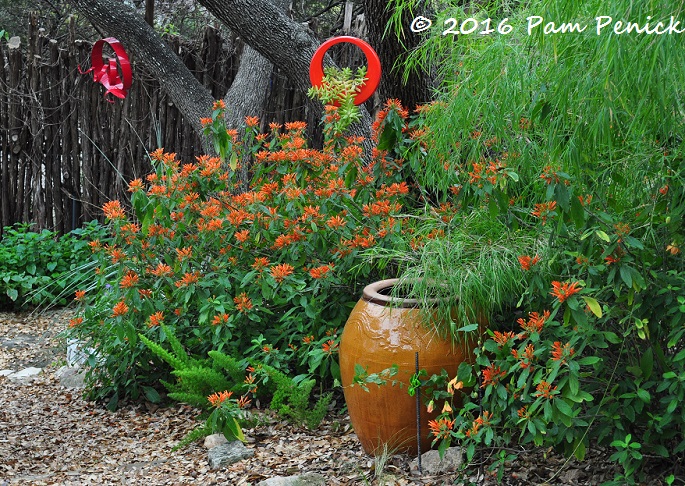
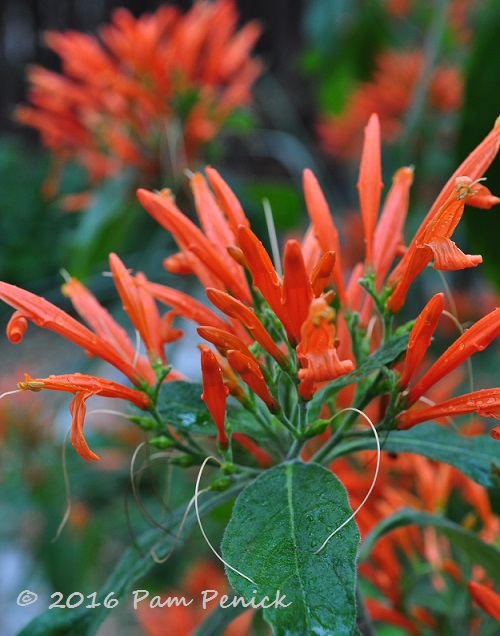
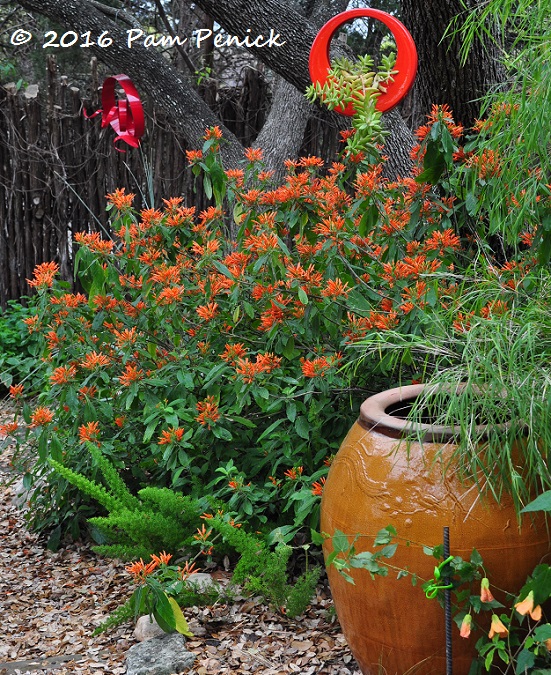
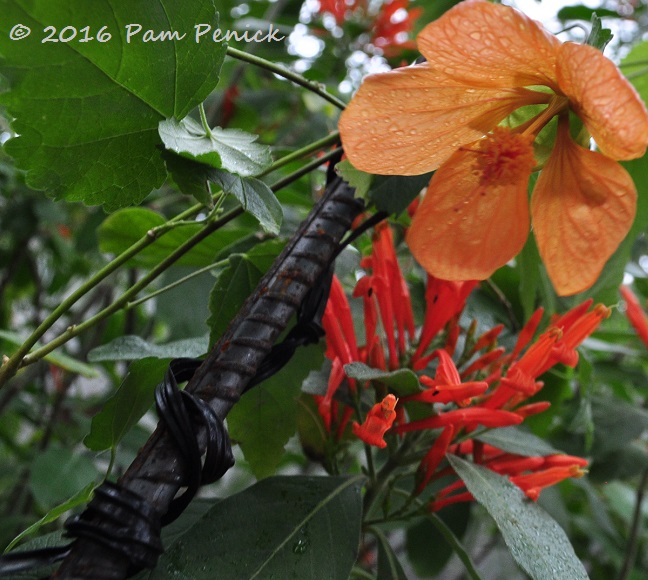
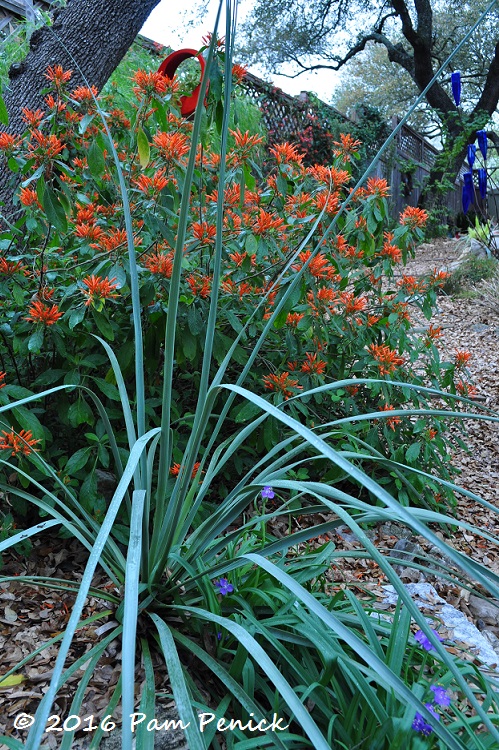
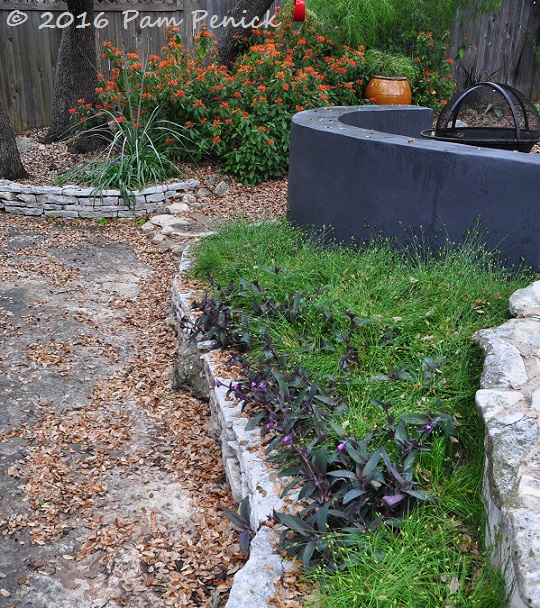
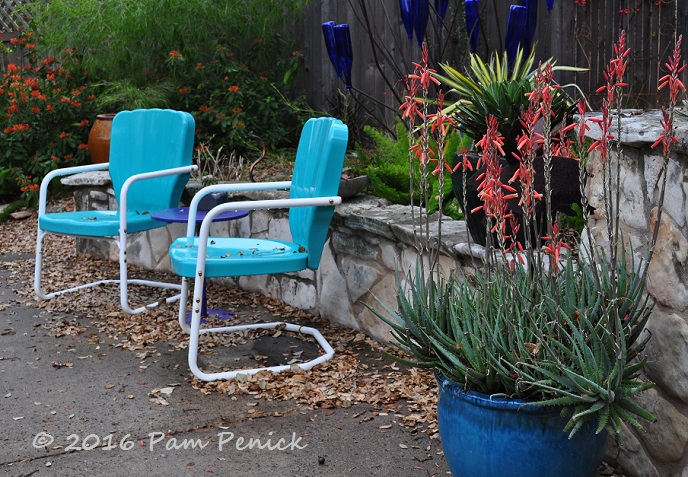
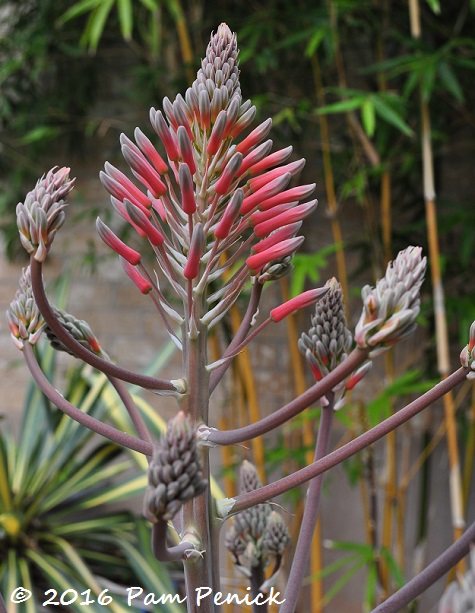
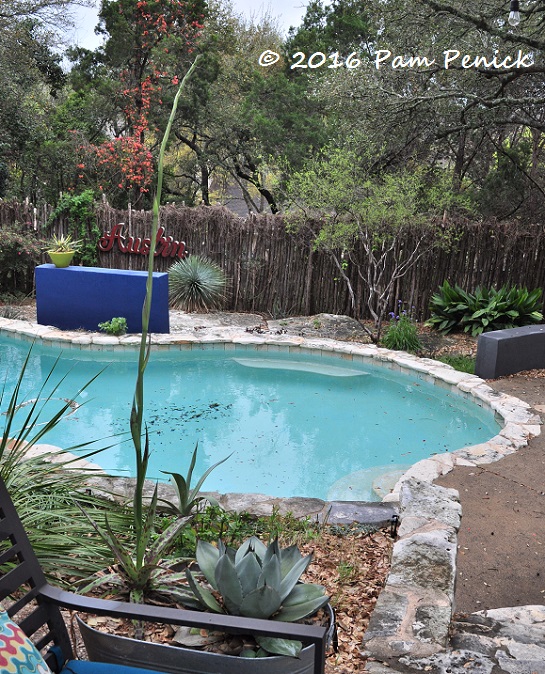
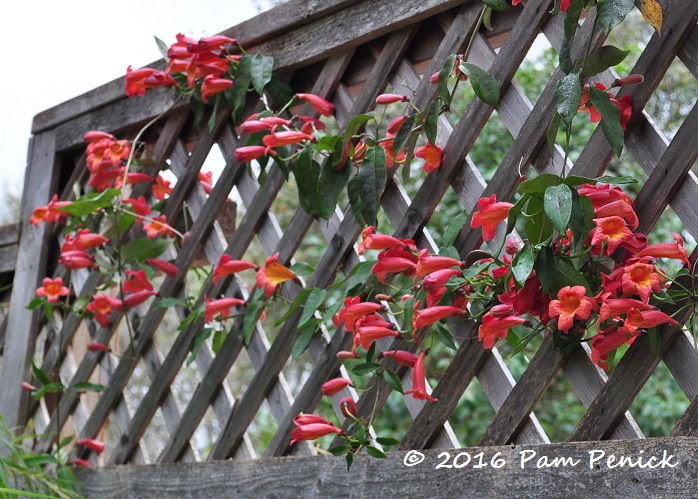
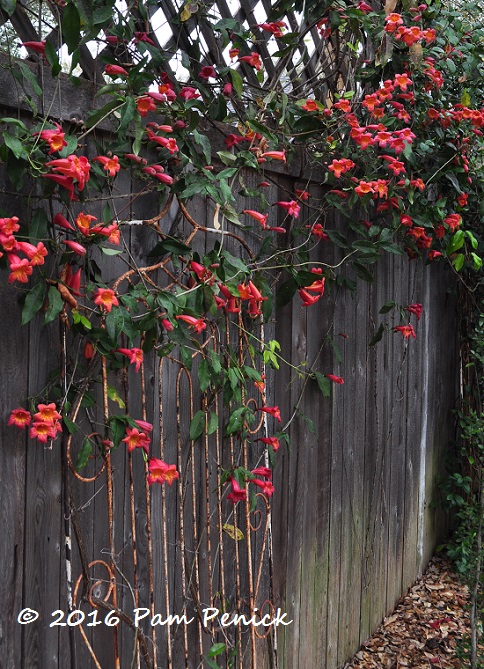
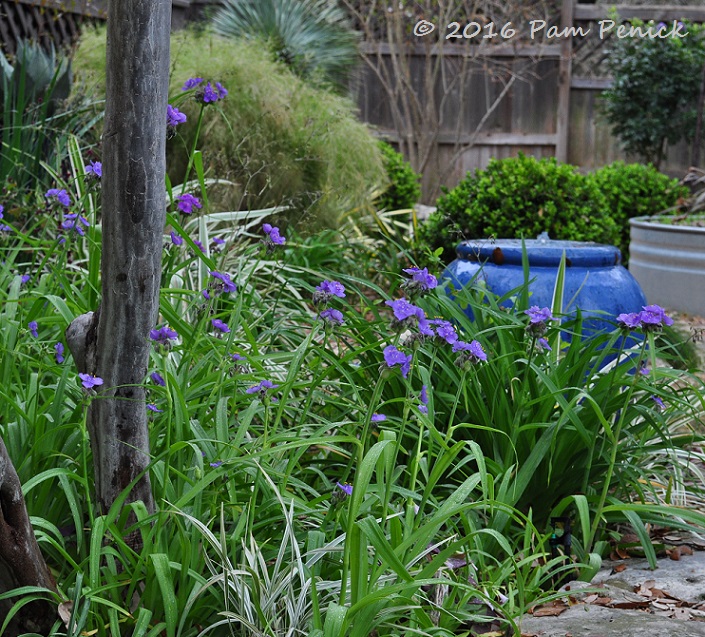
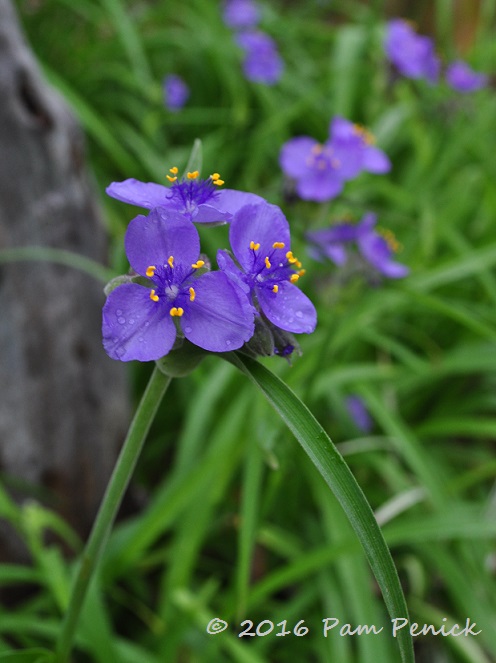
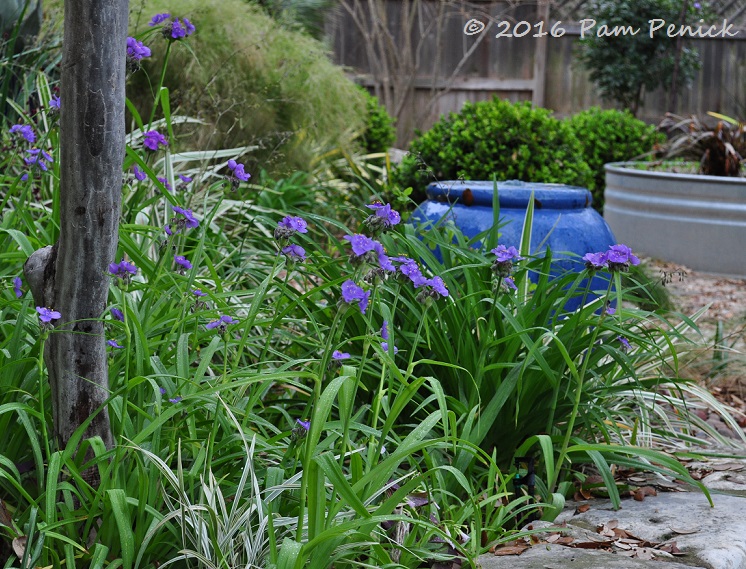
I usually prune my Mexican honeysuckle back, but it’s covered in blooms and I’m reluctant this year. Should we just bite the bullet and do it anyway?
I would wait and prune after this flush of flowers fades, Mary. Might as well enjoy them for now. —Pam
I’m berry glad 😉
Looking gooooood in your garden!!!!
A fellow punster! 🙂 —Pam
Pam, your garden looks great! My Mexican honeysuckle and Tradescantia are blooming as well. However, My Mexican honeysuckle is tall and spindly. How do you get yours so full and bushy? Do you cut it back to the crown? And echoing Mary, should I ignore the flowers and do that now? Inquiring minds want to know!
Peter, I have nothing to do with it. When I was writing this post, I compared my recent photos to those from last year, and I was struck by how much fuller the Mexican honeysuckle is this year. I chalked it up to the fact that my garden didn’t have a freeze this winter.
Normally I cut it back by about a third in mid-February, not all the way to the crown. Of course you’re a bit colder in Dallas. Does it die all the way to the ground each winter there?
As I suggested to Mary, I would let it have this bloom cycle and wait to do any pruning until it takes a break. Enjoy your orange! —Pam
Most winters it does die to the ground, but not this winter. We had only 4 light freezes all winter, and now it is blooming well (it started blooming last month). It is a fairly new item in my garden, so I will follow your advice and see what happens. I value it because I have mostly dappled shade.
While my Mexican honeysuckle is also in full bloom (and spindly, yes, but so be it I will not cut those flowers off considering the plight of pollinators!) my spiderwort is on a different schedule apparently. Knowing yours is all decked out I’ll keep a closer eye out.
Huzzah for the rain’s arrival at long last, but Razzberries for the threats of hail, damaging winds and potential flooding in our general area that are uninvited tag-a-longs. Typical Texas weather – gives with one hand while taking with the other…
Deb, see my reply to Peter, above, re: spindliness of the Mexican honeysuckle. Now that I think about it, I have a spindly patch of my own out front — it’s a less established bunch, so maybe that affects it too?
Here’s hoping for a nice soaking rain, now that chances for severe weather have decreased. —Pam
What, no Desert Mallow in your repertoire of orange blooms! You gotta have one of those!
Oh yes, I have it! But I cut it back in February, and it’s in part shade, so it hasn’t started blooming yet. —Pam
Lovely photos!!! Crossvine is another plant I’ve added to my garden because of your blog. Thanks for sharing all the pics.
Is yours blooming, Laurin? Hope so! —Pam
What a hot time in Austin. Your garden looks so pretty. All I have blooming yet are crocus, daffodils and a few snowdrops. Seeing your color full garden makes me anxious for more here.
I guess it won’t be long, eh, Lisa? I bet your spring bulbs are lovely. Our spring is nice, but it sure isn’t leisurely. —Pam
This was like a look at summertime in the PNW. I love all your orange flowers.
Is that right, Alison? I never cease to be amazed at the differences between our zone 8b climates. —Pam
Beautiful color combinations, Pam, with a completely different plant palette than I am used to! We are just starting with spring bulbs and hellebores here in W. Pa. I love seeing the vibrant oranges and blues! We do have spiderwort here, our own local native ohioensis version with that same lovely intense blue. That won’t bloom until May, so I’m enjoying your preview 🙂
Spiderwort seems to be one of those plants that every climate can grow. Some people find it too aggressive, but I like it. It takes the place of spring bulbs for me, and I like its reliable return each spring. It disappears as soon as the summer heat arrives, clearing the way for summer-bloomers. —Pam
Lovely. Never was much of a fan for orange in the garden…until now!
Come over to the orange side, Rebecca. 🙂 —Pam
Beautiful! And that cross vine adds a great accent/color echo, but I hope it doesn’t hurt the tree like that? Your color combos are lovely
Cedars are not well loved here in Austin, Renee (male trees cause massive allergies in late winter), although I’d pull the vine off if I could reach it. It seems to have grown through the fence into the narrow greenbelt behind our house, where it’s climbing skyward. —Pam
The oranges are the perfect counterpoint to all of your blues. The tradescanthia figured that out long ago.
Aren’t they smart? 🙂 —Pam